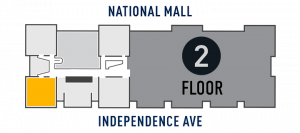Stardust Capsule
This object is on display in Kenneth C. Griffin Exploring the Planets Gallery at the National Air and Space Museum in Washington, DC.

For more information, visit the Smithsonians Terms of Use.
This object is on display in Kenneth C. Griffin Exploring the Planets Gallery at the National Air and Space Museum in Washington, DC.
